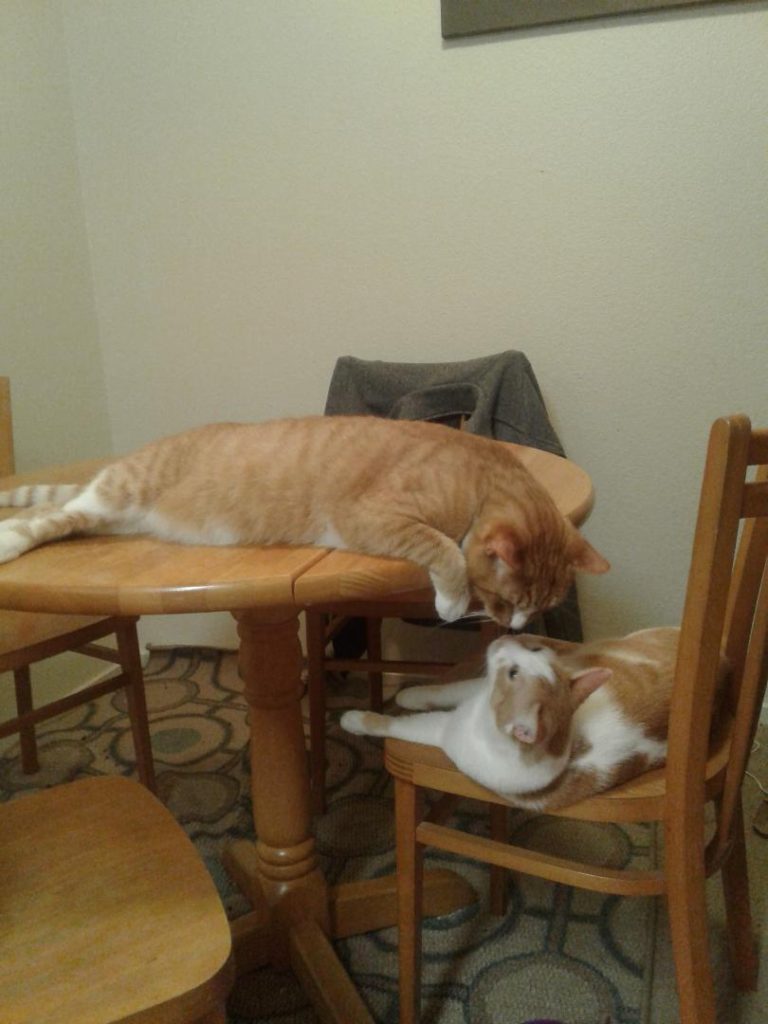
Bringing a new cat
In many instances, people hesitate to adopt more than one animal because they are concerned that the pets will not get along. Bringing home a new cat is a significant and stressful event for the newcomer and the household animals.
If you have patience and are willing to follow the recommended steps, the experience may be enjoyable and successful. In this article, we will go over some tips that will help you to introduce a new cat to your furry four-legged friends.
We consulted a SNAP Cats expert, summarized the personal experiences with our cats and would like to share the findings with you.
Provide private, comfortable space
When you bring a new cat, first prepare your home and provide a clean, quiet room where the cat can spend time alone. Make sure that you have the necessary items for your new family member. Place a warm bed or blanket, food, water, and litter box in the kitty’s room. Eliminate street and other loud, sudden noises, close the windows and keep other family members separately. Check on the cat frequently and address the kitty’s needs. The kitty may want to hide for a while. Allow her some time and never force the cat to interact with you or come out until she’s ready.
Give your cat time
The adjustment time greatly depends on your cat’s personal history, personality, and exposure to trauma in the past. Learn as much as you can about your cat’s story, be patient and gentle. The transition to a new home is stressful event for a cat, and the kitty may feel anxious and scared. Spend time with the new cat. You can help to relieve the cat’s anxiety by speaking calmly and quietly. If your cat allows, touch the kitty gently. Keep in mind that if the cat experienced abuse in the past, touch can be very stressful and horrifying for him. Never force physical contact and allow the kitty to come to you first.
Exploring the new place
SNAP cats suggest if you don’t have other animals in the house, your cat is ready to come out when the kitty openly comes to you and is not afraid. When your cat is prepared to leave the room and explore the new place, allow the cat to go out independently. SNAP cats experts warn against forcing a cat to leave the room. Never pressure the cat out or close the door behind the cat. The private room is like a refuge place for the new family member and should be available. Your cat needs a secure place to return at all times.
Meeting other animals
Our cats Sunny and Marley have a history of successful socialization after one month of living in different rooms. The cats had an opportunity to smell each other’s items, sniff under the door, and eat by the door, next to each other. Keep in mind that cats are territorial animals. SNAP cats advise keeping a new cat in a separate room for at least 5 to 7 days. The main principle is to allow each cat to get used to each other’s smell and presence. Before the cats meet, you may swap their beds and blankets.
Provide food and treats
When your new cat explores your place and is about to meet other animals in the household, make sure the experience is enjoyable. Always have plenty of food and treats for all the furry, four-legged family members. Provide tasty treats when the animals are around each other. Allow them to eat in each other’s presence, at the appropriate distance, when necessary. You can start with brief episodes and bring your pets and a new cat together for a short time.
Conclusion
Before you introduce the animals, please make sure that everyone is comfortable and is ready to meet each other. Provide the new cat a private, clean, warm, and comfortable space, free of noises and other distractions. Allow the newcomer enough time to acclimate to your house and support her. Anticipate the cat’s needs and be patient. When appropriate, exchange the animals’ items, such as blankets, towels, and beds, so they can get used to each other’s presence and smells. Use plenty of treats when introducing your family members to each other. Observe your cats and dogs for signs of anxiety or distress. With enough patience and determination, you can help your pets become good friends.
For more information, you can visit the SNAP Cats link.
